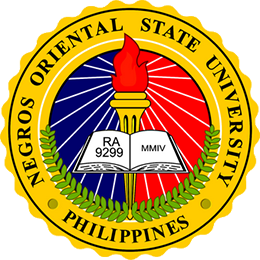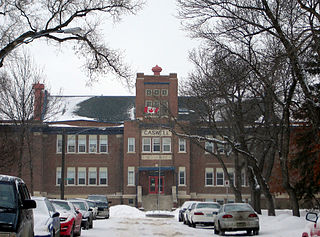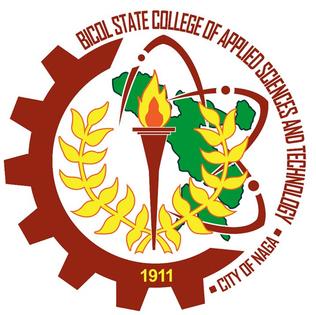Related Research Articles

A handicraft, sometimes more precisely expressed as artisanal handicraft or handmade, is any of a wide variety of types of work where useful and decorative objects are made completely by one’s hand or by using only simple, non-automated related tools like scissors, carving implements, or hooks. It is a traditional main sector of craft making and applies to a wide range of creative and design activities that are related to making things with one's hands and skill, including work with textiles, moldable and rigid materials, paper, plant fibers,clay etc. One of the oldest handicraft is Dhokra; this is a sort of metal casting that has been used in India for over 4,000 years and is still used. In Iranian Baluchistan, women still make red ware hand made pottery with dotted ornaments much similar to the 5000 year old pottery tradition of Kalpurgan, an archaeological site near the village. Usually, the term is applied to traditional techniques of creating items that are both practical and aesthetic. Handicraft industries are those that produce things with hands to meet the needs of the people in their locality without using machines.

Carpentry is a skilled trade and a craft in which the primary work performed is the cutting, shaping and installation of building materials during the construction of buildings, ships, timber bridges, concrete formwork, etc. Carpenters traditionally worked with natural wood and did rougher work such as framing, but today many other materials are also used and sometimes the finer trades of cabinetmaking and furniture building are considered carpentry. In the United States, 98.5% of carpenters are male, and it was the fourth most male-dominated occupation in the country in 1999. In 2006 in the United States, there were about 1.5 million carpentry positions. Carpenters are usually the first tradesmen on a job and the last to leave. Carpenters normally framed post-and-beam buildings until the end of the 19th century; now this old-fashioned carpentry is called timber framing. Carpenters learn this trade by being employed through an apprenticeship training—normally 4 years—and qualify by successfully completing that country's competence test in places such as the United Kingdom, the United States, Canada, Switzerland, Australia and South Africa. It is also common that the skill can be learned by gaining work experience other than a formal training program, which may be the case in many places.

A goldsmith is a metalworker who specializes in working with gold and other precious metals. Nowadays they mainly specialize in jewelry-making but historically, goldsmiths have also made silverware, platters, goblets, decorative and serviceable utensils, and ceremonial or religious items.

Negros Oriental State University is the only state university in the province of Negros Oriental, Philippines. Its Main Campus is located in Dumaguete City and has the greatest number of academic programs and student organizations. It also has 7 satellite campuses all over the province. Formerly Central Visayas Polytechnic College, it was converted into a state university for students from Visayas and Mindanao. The Main Campus is on Kagawasan Avenue, Dumaguete City, beside the provincial capitol building of Negros Oriental.

The Cleveland Institute of Art, previously Cleveland School of Art, is a private college focused on art and design and located in Cleveland, Ohio.
Design and technology (D&T) is a school subject offered at all levels of primary and secondary school in England. It is used so children develop a range of designing skills and technology skills for example, using media to design their project and a saw to cut items. It first appeared as a titled subject in the first National Curriculum of England, Wales and Northern Ireland in 1988. D&T, or a similar form, has been taught in many countries around the world such as India, United States, Australia, New Zealand, Ireland, Malta, China, South Africa, France and Finland. Many international schools teach design and technology. As a school subject it involves students in designing in a practical context using a range or materials and media. It is also a university course in many countries, including Australia, Canada, the US, Singapore, South Africa, Netherlands and New Zealand, both for the preparation of teachers and for general education in areas such as industrial design. Some of the UK universities which deliver courses include: Brighton, Sheffield Hallam, Goldsmiths, University of London and Greenwich.
The International School of Curitiba (ISC), founded in 1959, is located in Curitiba, Paraná, Brazil.
Industrial arts is an educational program which features fabrication of objects in wood or metal using a variety of hand, power, or machine tools. Industrial Arts is commonly referred to as Technology Education. It may include small engine repair and automobile maintenance, and all programs usually cover technical drawing as part of the curricula. As an educational term, industrial arts dates from 1904 when Charles R. Richards of Teachers College, Columbia University, New York suggested it to replace manual training.

Kloof High School is a public, co-educational high school located in Kloof, near Durban in KwaZulu-Natal, South Africa.

Sloyd, also known as Educational sloyd, is a system of handicraft-based education started by Uno Cygnaeus in Finland in 1865. The system was further refined and promoted worldwide, and was taught in the United States until the early 20th Century. It is still taught as a compulsory subject in Finnish, Danish, Swedish and Norwegian schools.
Education in the Philippines is provided by public and private schools, colleges, universities, and technical and vocational institutions in the country. Funding for public education comes from the national government. For the academic year 2017–2018, about 83% of K–12 students attended public schools and about 17% either attended private schools or were home-schooled.
Howell Cheney Technical High School, or Cheney Tech, is a technical high school in Manchester, Connecticut. It was established in 1915 by Howell Cheney as a textile school, in order to provide training for those wishing to work at the local silk mills. It receives students from many nearby towns. Cheney Tech is part of the Connecticut Technical High School System.

Education in Saskatchewan, Canada, teaches a curriculum of learning set out by the Government of Saskatchewan through the Ministry of Education. The curriculum sets out to develop skills, knowledge and understanding to improve the quality of life. On June 22, 1915, Hon. Walter Scott, Premier and Minister of Education, set out as his mandate the "purpose of procuring for the children of Saskatchewan a better education and an education of greater service and utility to meet the conditions of the chief industry in the Province, which is agriculture". Education facilitates the cultural and regional socialization of an individual through the realisation of their self-potential and latent talents. Historically, the region of Saskatchewan needed successful homesteaders so the focus was to develop a unified language for successful economic trading, and agricultural understanding to develop goods, livestock and cash crops to trade. After the mechanized advancements following the industrial revolution and World War II, the primary employment agriculture sector of farming was not as labour-intensive. Individuals focused on secondary industries such as manufacturing and construction, as well as tertiary employment like transportation, trade, finance and services. Schools became technologically more advanced and adapted to supply resources for this growing demand and change of focus.
The Sydney Teachers' College was a tertiary education institution that trained school teachers in Sydney, Australia. It existed from 1906 until the end of 1981, when it became the Sydney Institute of Education, a part of the new Sydney College of Advanced Education. On 1 January 1990 Sydney Institute of Education was amalgamated with the University of Sydney eventually becoming a part of the then Faculty of Education at the University of Sydney.

Zamboanga Peninsula Polytechnic State University is a state university in Zamboanga City, Philippines. It is just a few meters from another state university, Western Mindanao State University and about 500 meters from Pilar College along R.T. Lim Boulevard. It is nestled along the university belt of the city where most of the colleges are.

City Charter High School, or City High, is a charter school in Pittsburgh, Pennsylvania, United States." It was founded in September 2002 by Richard Wertheimer and Mario Zinga under the non-profit educational company EDSYS, Inc.

The Bethlehem Area Vocational-Technical School is a career & technical school located in Bethlehem, Pennsylvania in the Lehigh Valley region of Pennsylvania, in the United States. It was officially started in 1965 when the Bethlehem Area School District, Northampton Area School District, and Saucon Valley School District combined resources to form one vocational-technical school for its students to attend.

North Bennet Street School (NBSS) is a private vocational school in Boston, Massachusetts. NBSS offers nine full-time programs, including bookbinding, cabinet and furniture making, carpentry, jewelry making and repair, locksmithing and security technology, basic piano technology, advanced piano technology, preservation carpentry, and violin making and repair, as well as a range of short courses and continuing education opportunities. Housed for more than 130 years at 39 North Bennet Street, near the Old North Church in Boston's North End, the School completed renovations on the former Police Station One and former City of Boston Printing Plant in September 2013. The subsequent move to the fully renovated 65,000 sq. ft. facility at 150 North Street brought all of their programs under one roof.

The Southeast Asian University of Technology (SEAUTech), formerly known as the Bicol State College of Applied Sciences and Technology(BISCAST), is a public state college, nonsectarian in the Philippines. It is located along Peñafrancia Avenue in Naga City. The current president is Dr. Alex H. Navarroza.
References
- ↑ Herschbach, Dennis R. (1990). Technology Education: Foundations and Perspectives. American Technical Publishers, Inc. pp. 86–90).
- ↑ The World of Construction. Industrial Arts Curriculum Project. McKnight and McKnight Pub. 1970.
- ↑ The World of Manufacturing, Teacher's Guide. Industrial Arts Curriculum Project. McKnight and McKnight Pub. 1971.